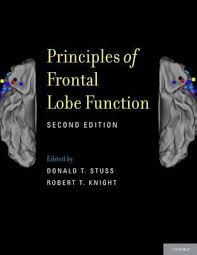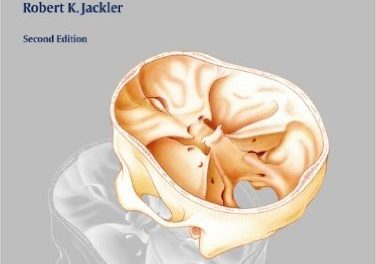 Editors: Donald T. Stuss, PhD and Robert T. Knight, MD
Editors: Donald T. Stuss, PhD and Robert T. Knight, MD
Publisher: Oxford University Press – 777 pages
Book Review by: Nano Khilnani
This massive (8 ½” x 12”) book with 45 chapters organized into nine sections has so much more information than what was contained in the 34 chapters of the first edition published in 2002, that the editors state that it is actually a whole new volume instead of simply being the second edition of Principles of Frontal Lobe Function.
With some 90 contributors, including section editors and coeditors, the range of topics covered in this tome is vast. To give you an overview of the comprehensive scope of the material contained in it, here are the section titles:
- Neuroanatomy and Neuropharmocology
- Frontal Lobe Development
- Systems Modeling
- Cognitive Neuroscience
- Social Neuroscience
- Neuropsychology
- Aging and prefrontal function
- Psychiatric and neurological disorders
- Neurorehabilitation
- Overview
New methods of observing and imaging the structural and functional parts of the frontal lobe of the human brain and monkey brains has led to gathering a massive amount of new data, which in turn has increased the knowledge base and insight currently available on this part of the human brain.
The new research uncovered in this book can be helpful to specialists involved in treating patients with frontal lobe dysfunction, including neurological and psychiatric disorders such as multiple sclerosis, obsessive-compulsive behavior, traumatic brain injury, and white matter disease.
The editors point out that this volume will be of particular interest to those who work in the areas of behavioral neurology, cognitive neuroscience, neuropsychiatry, neuropsychology, and neurorehabilitation.
Below we cite some topics covered in some sections of this book.
The first part of the Introduction to this book, written by the two main editors, looks at the past and future, particularly the major research findings published in key articles and books on the subject of frontal lobe function and what can be expected in the years to come. They point out that there has been an “explosion” of knowledge relating to the frontal lobe since the publication of the first edition of this book in 2002 due mainly to the development of new technologies.
In the second part of the Introduction to this book, the cognitive functions of the prefrontal cortex are the focus of discussion. The author of this article points out that the prefrontal cortex was one of the latest structures of the brain to evolve. This part of the human brain gives us the capacity to pre-adapt to our environment, and it is connected to every other part of the brain.
The section on Neuroanatomy and Neuropharmacology deals with prefrontal pathways that control our attention; the molecular vulnerabilities in prefrontal cortical circuits; neurochemical modulation of the fronto-executive “toolbox”; the functional role of reward signals in different prefrontal areas; and the mid-dorsolateral prefronto-parietal network and the epoptic process.
Among the topics covered in the section on Frontal Lobe Development are: postnatal development of neural circuits in the prefrontal cortex of primates; the development of children’s frontal lobes; and adolescent frontal lobes under construction.
In the section on Systems/Modeling we learn, among other things, how context impacts cognitive and motivational control of behavior in the primate’s prefrontal cortex, and how and why the prefrontal cortex is the quintessential “cognitive-type” neural circuit in terms of working memory and decision-making
Cognitive Neuroscience as a section deals with numerous topics including motivation control; adaptive neural coding in the frontal and parietal cortices; functional contributions of the ventromedial prefrontal cortex in value-based decision-making; and the network-based mechanism of prefrontal control.
The Social Neuroscience section touches upon matters such as dynamic social judgment in the frontal lobes and beyond; social outcome following early-life damage to the prefrontal cortex; and intentional and incidental self-control in the ventrolateral prefrontal cortex.
The section on Neuropsychology takes up past studies of the prefrontal cortex from this perspective, such as the Robbia approach for example; a new era for lesion-behavior mapping of prefrontal functions; and the rostral prefrontal cortex as related to metacognition in the brain.
Donald T. Stuss, PhD is President and Scientific Director of the Ontario Brain Institute. He is affiliated with Rotman Research Institute of Baycrest and the Departments of Psychology and Medicine (Neurology, Rehabilitation Sciences) at the University of Toronto in Canada.
Robert T. Knight, MD is with the Department of Psychology at the Helen Wills Neuroscience Institute at the University of California in Berkeley.







